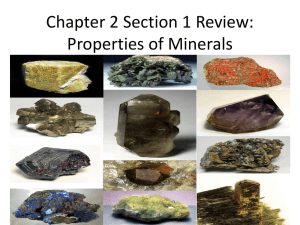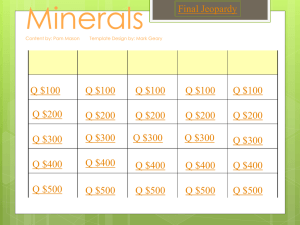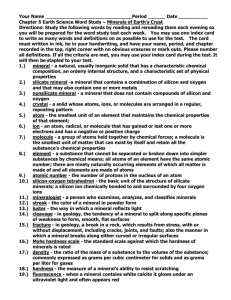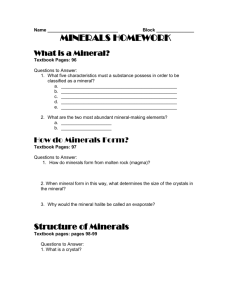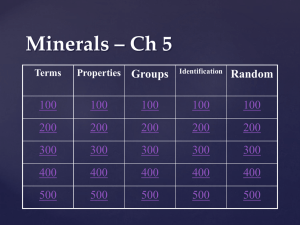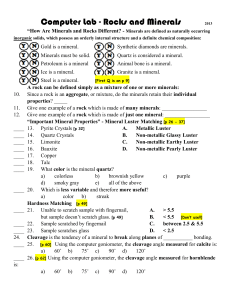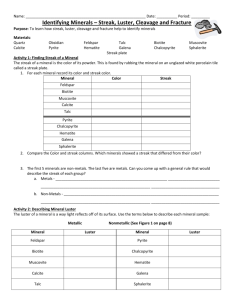Minerals - Web School Tools
advertisement
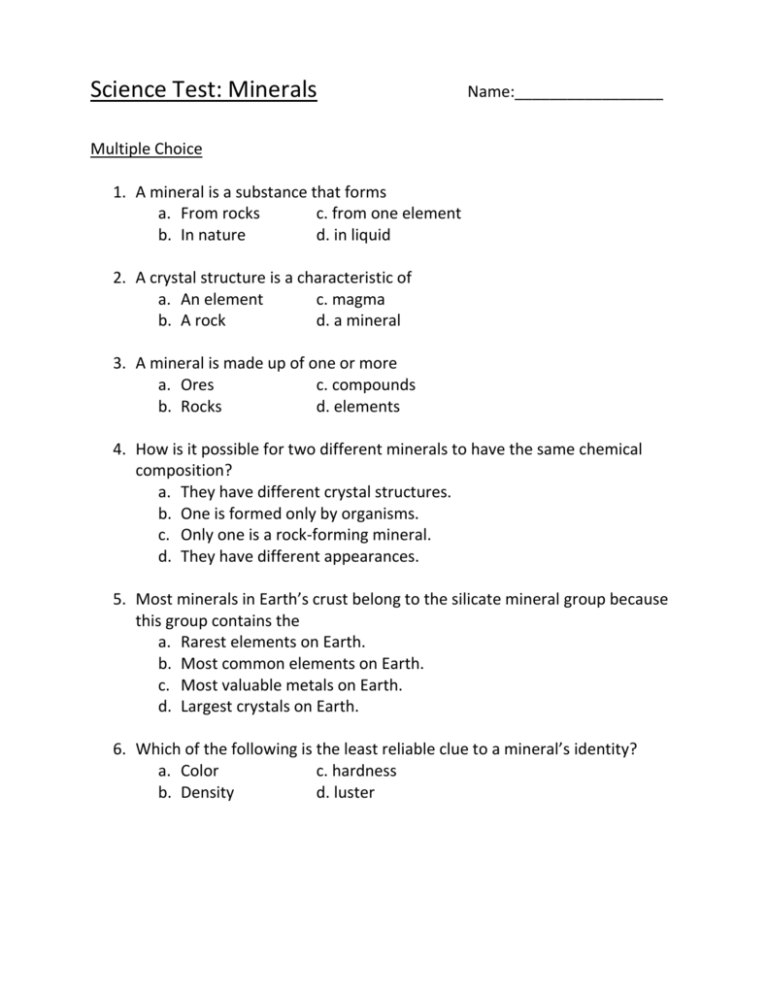
Science Test: Minerals Name:_________________ Multiple Choice 1. A mineral is a substance that forms a. From rocks c. from one element b. In nature d. in liquid 2. A crystal structure is a characteristic of a. An element c. magma b. A rock d. a mineral 3. A mineral is made up of one or more a. Ores c. compounds b. Rocks d. elements 4. How is it possible for two different minerals to have the same chemical composition? a. They have different crystal structures. b. One is formed only by organisms. c. Only one is a rock-forming mineral. d. They have different appearances. 5. Most minerals in Earth’s crust belong to the silicate mineral group because this group contains the a. Rarest elements on Earth. b. Most common elements on Earth. c. Most valuable metals on Earth. d. Largest crystals on Earth. 6. Which of the following is the least reliable clue to a mineral’s identity? a. Color c. hardness b. Density d. luster 7. How a mineral breaks (fracture or cleavage) is related to the a. Number of elements of which it is made. b. Other types of minerals present as it was formed. c. Strength of bonds between its atoms. d. Speed at which it was formed. 8. What types of mineral formed depends on a. Which elements are present. b. The types of rock present. c. The density of rocks present. d. Whether crystals can form. 9. Open-pit mining is used to obtain ores that lie a. Under flat land. b. Deep in Earth’s crust. c. Near the surface of the earth. d. In riverbeds. 10. Gemstones are mainly used in a. Building materials b. Paper products c. Automobile parts d. Jewelry making 11. Minerals that react to hydrochloric acid belong to which group? a. Magma c. Carbonate b. Gemstones d. Platinum 12. An ______________ is a substance that contains only one type of atom. a. Crystal c. rock b. Element d. ore 13. Using the images on p. 47, which crystal group does gypsum belong to? a. Cubic c. Beryl b. Triclinic d. Monoclinic Circle the 4 characteristics of a mineral: Is a solid Is a liquid Contains calcite Is a gas Always fractures Has strong horizontal bonds Reacts to acid Has a crystal structure Is a rock Forms in nature Has metallic luster Has a definite chemical makeup Is edible Is radioactive Is highly magnetic Circle 6 methods of identifying a mineral: Carbon Color Streak Cleavage Plate Quartz Metal Density Luster Fracture Property Calcite Carbonate Evaporate Fill in the blank: Using the Mohs Scale on p. 55, ___________________ is the hardest mineral. Only a ______________ can scratch another ________________. Gypsum has a hardness of ________ and can be scratched by your _______________. A mineral with a lower number on the Mohs scale is considered a ______________ mineral. A mineral with a higher number on the Mohs scale is considered a ______________ mineral. Define these words. Use examples from class to help you explain. Fracture: Cleavage: Streak: Crystal: Luster: Florescence: Magma: Lava: Ores:
